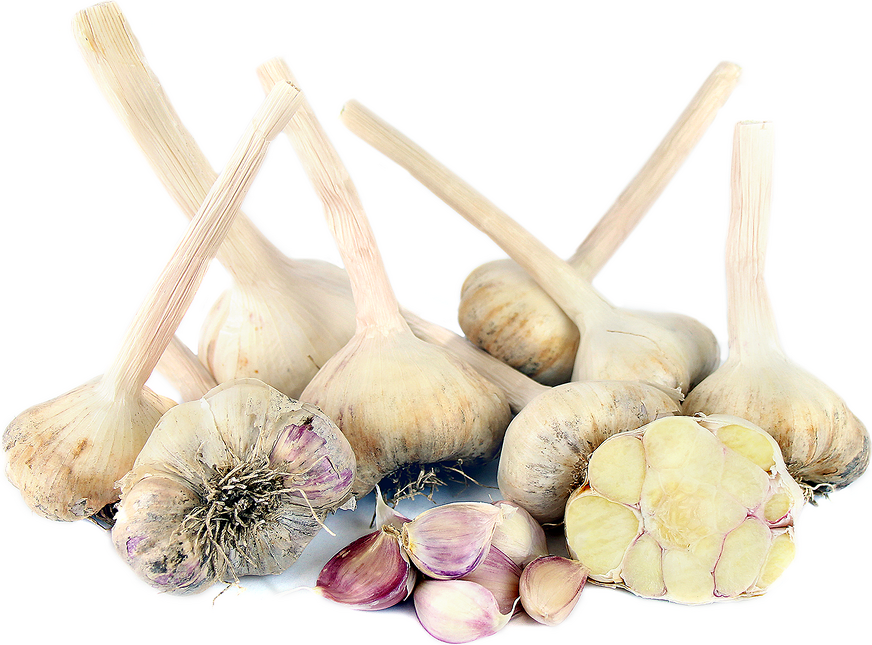


Kettle River Garlic
Estimated Inventory, lb : 0
Description/Taste
Kettle River garlic produces very large bulbs, sometimes up to 10 centimeters in diameter, and has plump cloves that grow in layers upon each other. The flakey, white outer wrappers may have some purple spots, and the inner clove wrappers are streaked with maroon to purple hues. When even slightly peeled, the aromatics of the garlic permeate immediately and linger. The large, creamy ivory cloves are rich and intense with earthy notes, medium heat, and a smooth and subtle finish.
Seasons/Availability
Kettle River garlic is available in the summer months.
Current Facts
Kettle River garlic, botanically classified as Allium sativum, is a softneck garlic favored for its large bulbs and rich flavor. Also known as Kettle River Giant, this garlic is classified as an artichoke variety, a name which serves as a descriptor of the way the cloves grow in an overlapping manner. Softneck garlic such as the Kettle River often falls under the common name of garlic in supermarkets as they are prolific in production, have longer than average shelf lives, and can be shipped readily with ease.
Nutritional Value
Kettle River garlic is an excellent source of vitamin B6, vitamin C, and manganese. It is also known for its high allicin content which has anti-bacterial and anti-fungal properties.
Applications
Kettle River garlic can be used in both raw and cooked applications. Kettle River garlic is stronger and spicier in flavor when raw than when in cooked form. Crushing, chopping, pressing or pureeing it releases even more of its oils and Kettle River garlic adds excellent flavoring when mixed with butter, dressings, sauces, dips, and salts. Roasting Kettle River garlic will enhance its flavor and add a caramelized sweetness that can be used with potatoes and savory meats. Kettle River garlic pairs well with acidic fruits and vegetables, fresh herbs such as basil, sage, and thyme, avocado, onion, poultry, beef, soy sauce, tofu, starches such as potato, pasta and bread, and both soft and hard cheeses. Kettle River garlic will keep up to seven months when stored in a cool and dry place.
Ethnic/Cultural Info
Garlic has remained an essential ingredient in medicinal remedies throughout the history of the New World. Even before Christopher Columbus introduced cultivated garlic to the New World, Native Americans in North America were using wild garlic as a remedy to soothe bug bites, snake bites, and as a cough syrup. These remedies were adopted by settlers later on and were continued to be used to combat viruses naturally.
Geography/History
Kettle River garlic is a rare heirloom cultivar that was discovered growing near the Kettle River in the Pacific Northwest of the United States in the 20th century. Today it can be found at specialty shops and farmers markets in the United States.




